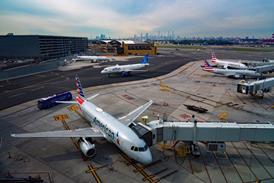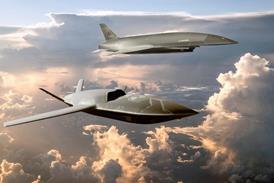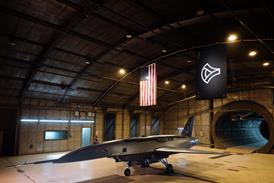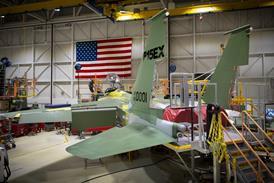As a 30-year industry veteran, CIT Transportation & International Finance president Jeffrey Knittel has seen a lot.
Aircraft leasing has evolved from leveraged to operating leases and from a small piece of the aircraft financing market to one controlling significant market share, with lessors taking active roles in the development and purchasing of new aircraft.
The sector has recently been beset with a series of mergers and acquisitions. Bohai Leasing struck a deal to acquire Avolon in November 2015 and is integrating it with its Hong Kong Aviation Capital business; AerCap acquired ILFC in April 2014, creating the world's largest lessor by value; and Mitsubishi UFJ Lease & Finance acquired Jackson Square Aviation in 2013.
Even with the flurry of deals, Knittel sees the sector as largely unchanged.
"In a lot of ways, there's change, but some of it's the same," he told Airline Business during an interview at his office at CIT's suburban New Jersey campus near New York City. "Generally speaking, there's two large players – the names of the players have changed a little bit – and then there's a number of people that are more midsize in nature."
AerCap and GECAS lead the leasing sector with valuations of around $32 billion each, Flightglobal's Fleets Analzyer database shows. In the middle, there are six players with valuations of between $9 billion and $12 billion, including CIT Aerospace division of CIT Transportation & International Finance with a 324-aircraft fleet valued at $9.5 billion.
"We fit into the upper end of that midsize range, and we've been very happy with that," says Knittel.
CIT may not be there for much longer. Group chief executive John Thain announced in October 2015 the company was exploring "strategic alternatives" for its aircraft leasing business following the acquisition of OneWest Bank in August and the decision to become a fully fledged commercial bank.
"We've decided to really unlock the value of the aerospace business," says Knittel. "What we found is that, within a bank construct, the capital that we have to carry for the orderbook and the like is punitive. We're not sure that a commercial air leasing business is optimised in the future CIT bank construct."
Maximising shareholder value will be the top priority for whatever alternative – be it a spin off or acquisition – that CIT selects for the aerospace business, he says.
"Our job is to maximise the valuation of the company, so if somebody were to walk in and pay a huge valuation for a terrific company, we'd certainly have to listen to them," says Knittel, leaving the option of a merger with another lessor very much on the table.
The strategic alternatives timeline remains about 12 months – or by the end of 2016 – says Knittel.
GLOBE OF OPPORTUNITY
"This is a business that for 30 years people talked about being global, but it truly wasn't," says Knittel. "It was various international airlines, but it wasn't truly a global business."
Things have changed. What he terms "interactivity" between airlines – including cross-border equity deals, codeshares and joint ventures – mean leasing is truly global today in a way it was not 30 years ago.
That comes with benefits and drawbacks. While a lessor can easily move an aircraft from Russia to Mexico or the USA – or to Africa – in a matter of weeks, minimising downtime, it is also exposed to economic uncertainties in different parts of the globe, ranging from the weakening Brazilian real to the impact of sanctions on Russia and the slowdown in China.
Economic forecasts show growth slowing – or stopping entirely – in major economies like Brazil and China while holding steady elsewhere. The US economy is forecast to grow between 2% and 3% in 2016, about the rate where it has stayed since 2011.
"Although you see pressures in places like Brazil, Russia and so on, there's also opportunities in other parts of the world," says Knittel. "It is a global business, and one of the advantages of being in a global business is you can deploy the assets in different places."
He points to China as an example, saying airlines continue to add aircraft despite the economic worries.
"There's a slowing in China, but we're still seeing opportunities there," says Knittel. "As a matter of fact, in the last 12 months the activity levels in China have been as good as the previous two or three years."
CIT placed one new Airbus A330-200 and four new Boeing 737-800s with Chinese carriers Lucky Air, Hainan Airlines and Sichuan Airlines in 2015, Fleets Analyzer shows. This is four more than it placed at airlines in the country the year prior.
India is another bright spot in Asia. Long known for its challenges, including weak airlines and aircraft repossession difficulties, Knittel says the country's airlines continue "to add airplanes and show growth".
An Indian carrier returned two aircraft, a 737-800 and a 737-900ER, to CIT and the lessor placed two A320s at IndiGo in 2015, Fleets Analyzer shows.
CIT's joint venture with Century Tokyo Leasing, TC-CIT, is one way it is beefing up its presence in Asia. While still growing since being established in 2014, Knittel says the partnership is already a "great success".
TC-CIT is on track to have about $2 billion in assets with a fleet of roughly 40 aircraft, depending on their size, by the second quarter of 2017, he says.
Fleets Analyzer shows that TC-CIT had 23 aircraft, including 11 A320-family aircraft, nine 737s and three widebodies, with a market value of $842 million at the beginning of January.
CIT also sees leasing growth in parts of Europe and the USA.
"There's been a great replacement story in the US," says Knittel. "Although you haven't had a lot of growth in terms of RPMs [revenue passenger-miles], you have had a lot of replacements of older-technology aircraft, and I think that's been a plus."
CIT placed aircraft with Frontier Airlines in 2015. In 2014, the lessor signed a sale-and-leaseback deal with Delta Air Lines for 24 aircraft, comprising 10 737-900ERs and 14 Bombardier CRJ900s.
It has also provided boutique-style debt financing to airlines, including a $40 million secured loan to Allegiant Air backed by its six used 757-200s.
CAPITAL ACCESS
Investors eager to find alpha remain keen on aircraft debt. Lessors have raised billions of dollars through unsecured notes and secured asset-backed securitisation deals, including CIT's $640 million ABS deal backed by 21 narrowbodies in July 2014.
"There's a lot of capital available to quality lessors," says Knittel. "I think in terms of going out and raising capital, either on an unsecured basis or secured with the bank lending market, the opportunities are terrific."
Recent events – like SMBC Aviation's decision to pull an ABS deal from the market, and the questions over used A330 and 777 values sparked by Delta chief executive Richard Anderson – do not concern him.
"[SMBC] had goals of what types of returns they were targeting, it didn't reach the return threshold… so they pulled it," says Knittel. "I would suggest that, depending on your targets, there is still lots of capital available."
Many think that overly ambitious expectations had led to SMBC's pulling of its $672 million Orbit ABS deal in November 2015. The securitisation was split into three tranches, spanning $561 million Class A-1, $85 million Class B-1 and $25.5 million Class C-1 notes.
The deal was backed by 32 aircraft, including 17 A320-family jets and 11 737s.
Other ABS deals are still moving forward. Private investment management firm Castlelake launched a $713 million ABS deal secured by a pool of 54 aircraft and six unrelated engines the same week that SMBC pulled its transaction. It priced at 4.7% on the $529 million Class A notes, 5.75% on the $106 million B notes, and 9% on the $78.5 million C notes.
The success of Castlelake has allayed some concerns over the impact of widebody value questions in the market. However, the question of a bubble very much remains since Anderson disclosed, in December 2015, that Delta had signed a letter of intent to buy a used 777-200ER for just $7.7 million.
NO BUBBLE
"Is it possible that you could get cheap, old airplanes? The answer is yes, especially if they're not in great condition," says Knittel on Anderson's comments.
However, he emphasises that this does not mean there is an A330/777 bubble about to burst. Early models of both aircraft are "different airplanes" than those manufactured today as a result of weight increases, range improvements and stretches, he says.
The gross weight of the A330 has increased to up to 242t on the higher-weight A330-300 from 210t when the type was introduced, says Knittel. This in turn has increased the range by about 2,000nm, allowing airlines to fly the type on longer routes, including between Asia and North America.
The 777 has evolved from the essentially regional 777-200 A series to the popular long-range stretched 777-300ER which many carriers are using to replace 747s.
There is some pressure on values for certain used A330 and 777 models, Knittel acknowledges. He points to the bankruptcy of Skymark Airlines in Japan – where all of the carrier's A330s were put on the market at once – as an example.
"When you put seven to 10 airplanes in the market quickly, that puts pressure on the marketplace [and] it puts pressure on the lease rates," says Knittel. "We think those events are episodic."
There have been a number of such episodic events since June 2015. Malaysia Airlines decided to end leases on about half of its 777-200 fleet early and the shutdown of Transaero put 14 more used 777s onto the market, though Aeroflot may take some of its fellow Russian carrier's aircraft.
"We think the fundamentals of both the 777 and the A330 are fine," says Knittel. "That doesn't mean airplanes don't age and, as they age, they're worth less."
Both Airbus and Boeing will soon begin the transition to their updated A330neo and 777X models, respectively. The former plans to introduce its re-engined A330neo in the fourth quarter of 2017, and the latter its stretched and updated 777X in 2020.
CIT has orders for 15 A330-900neos, as well as for 12 A350-900s and 16 787-9s, Fleets Analzyer shows. It does not have orders for the 777-8X or 777-9X.
"We thought they were great technology and, fundamentally, we thought the economics to both a lessor and the airlines would be great, and that's proven to be true," says Knittel on the A350s and 787s. "When you talk to the airlines about how those airplanes are performing, they're very, very happy."
He expects similar benefits from the A330neo when deliveries begin.
Asked why CIT has not ordered the 777X, Knittel says the aircraft is on the "upper edge" of the lessor's fleet. With the first available delivery slots in 2023 or 2024, it is "a long time out to be making a decision today", he adds.
"We think it's a very, very interesting airplane – the 777-9X specifically," he says, suggesting that CIT may take a closer look at the type in future. The largest aircraft models in CIT's fleet are the A350-900 and 777-200ER, Fleets Analyzer shows. It has two of each plus the 12 outstanding A350 orders.
While CIT is active in the widebody space, narrowbodies make up the bulk of the lessor's fleet. Single-aisle jets constitute more than 80% of its 324 aircraft, including 123 A320-family aircraft, 91 737s and 42 regional jets, Fleets Analyzer shows. CIT has orders for 50 A320neo-family aircraft and 30 737 Max 8s.
One hot topic Knittel is keeping his eye on is the development of a 757 replacement. While the A321neo and 737 Max 9 will replace the type for shorter missions, Airbus and Boeing have taken different tracks to a longer-range replacement.
CIT sees the long-range A321neo model taking a "portion" of the up-to-4,000nm point-to-point market, says Knittel. However, he does not see it as a replacement for every airline's 757 needs.
"We think the A321LR will do fine. It's an airplane that has potential to get a fairly substantial piece of that size of the market, but you also see the base airplanes taking part of that market too," he says.
Boeing is taking a "step change" approach to replacing the 757, says Knittel. This is likely to take the shape of a roughly 250-seat aircraft with a 4,000-4,500nm range entering service in the mid-2020s, he says, citing comments by Boeing executives.
"It's a matter of timing though," he continues, citing the various fleet strategies among airlines.
For example, Delta recently purchased five used last-off-the-line 757-200s from Shanghai Airlines and is likely to fly them for another decade, while American Airlines is taking new A321s in the double-digits annually to replace its domestic 757 fleet.
"Various airlines have different fleet strategies," says Knittel. "It's the old saying: 'Different strokes for different blokes'... Each airline has a different culture and different goals, and you can make them both work."
Source: Airline Business























